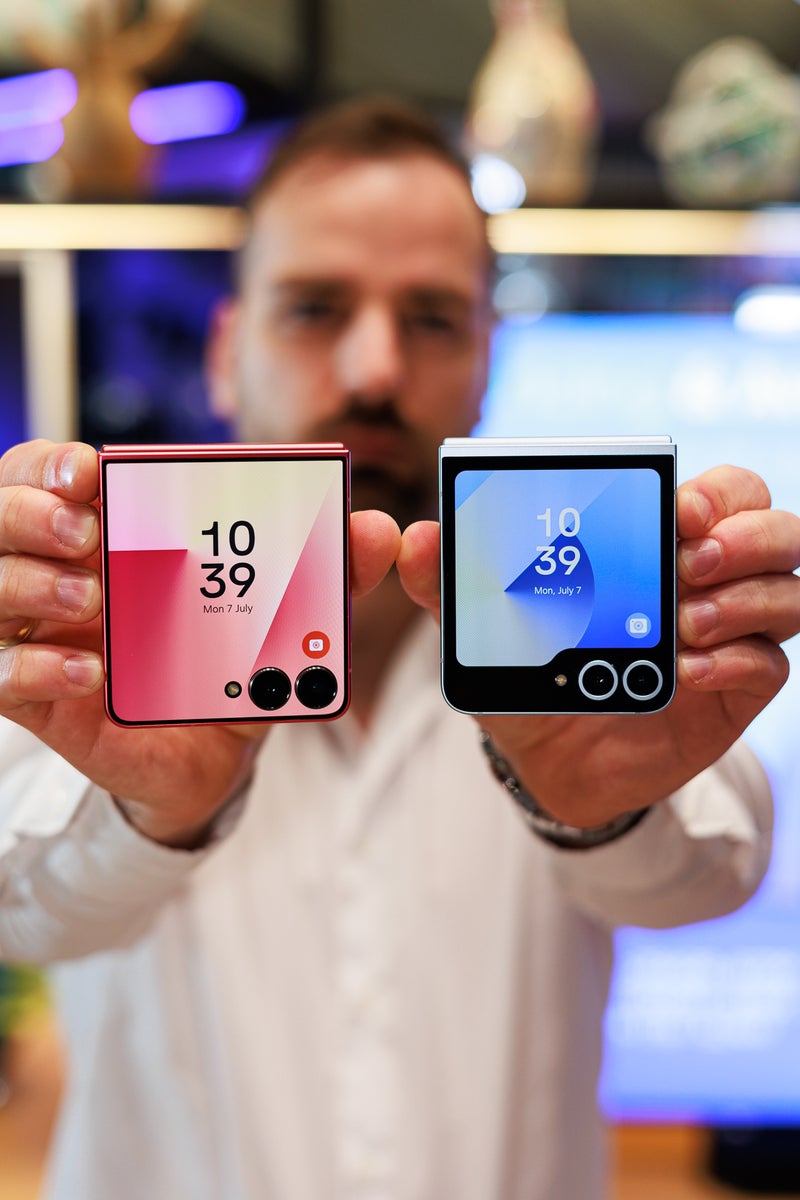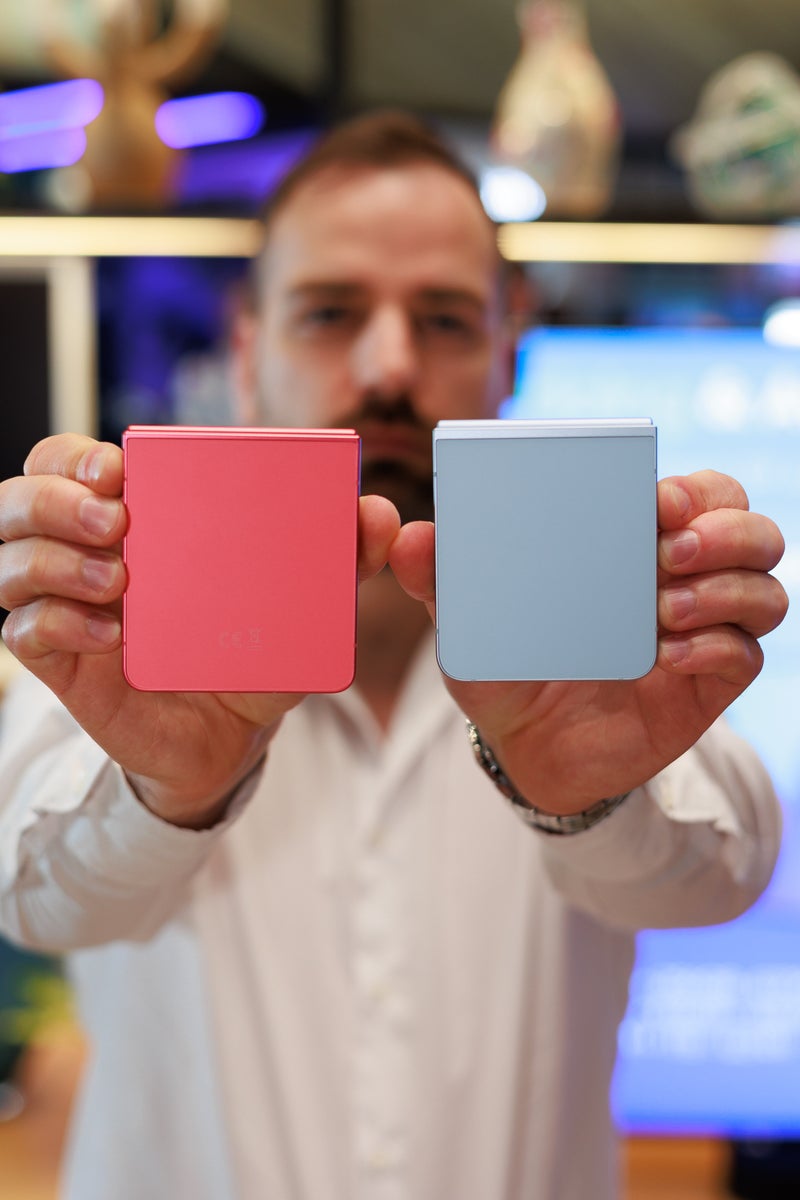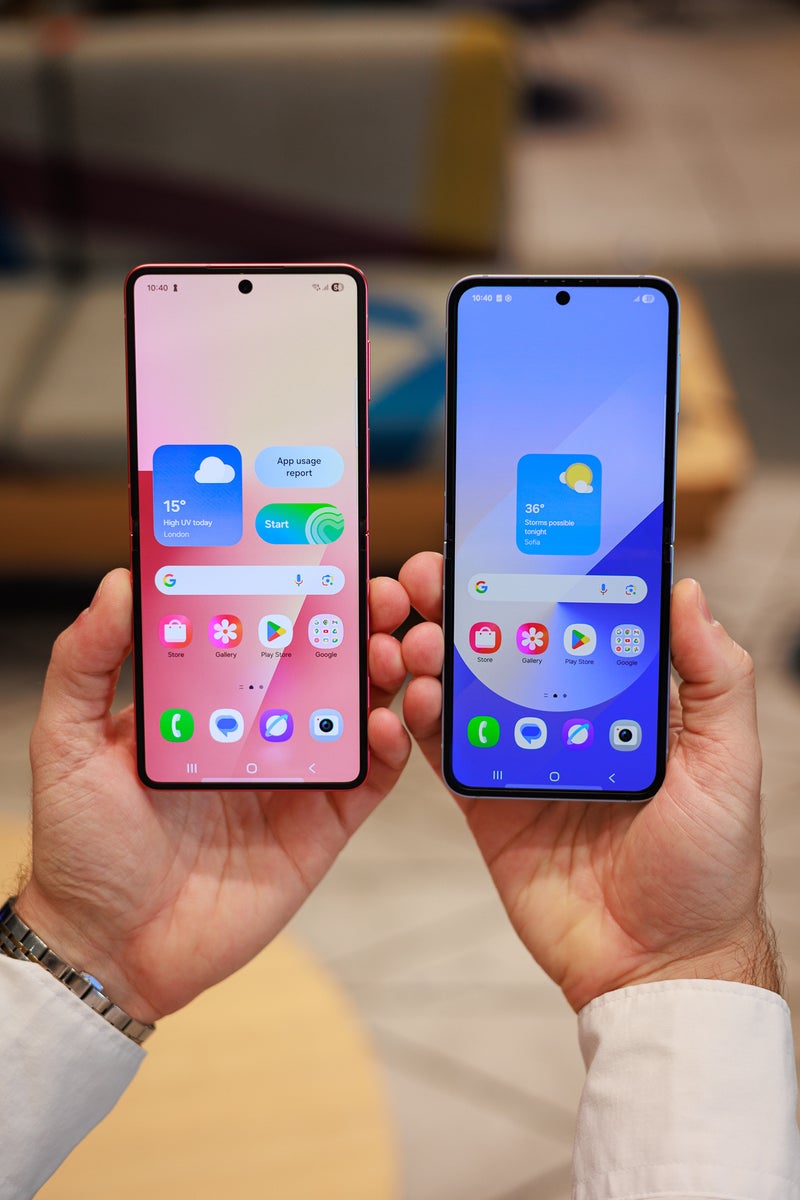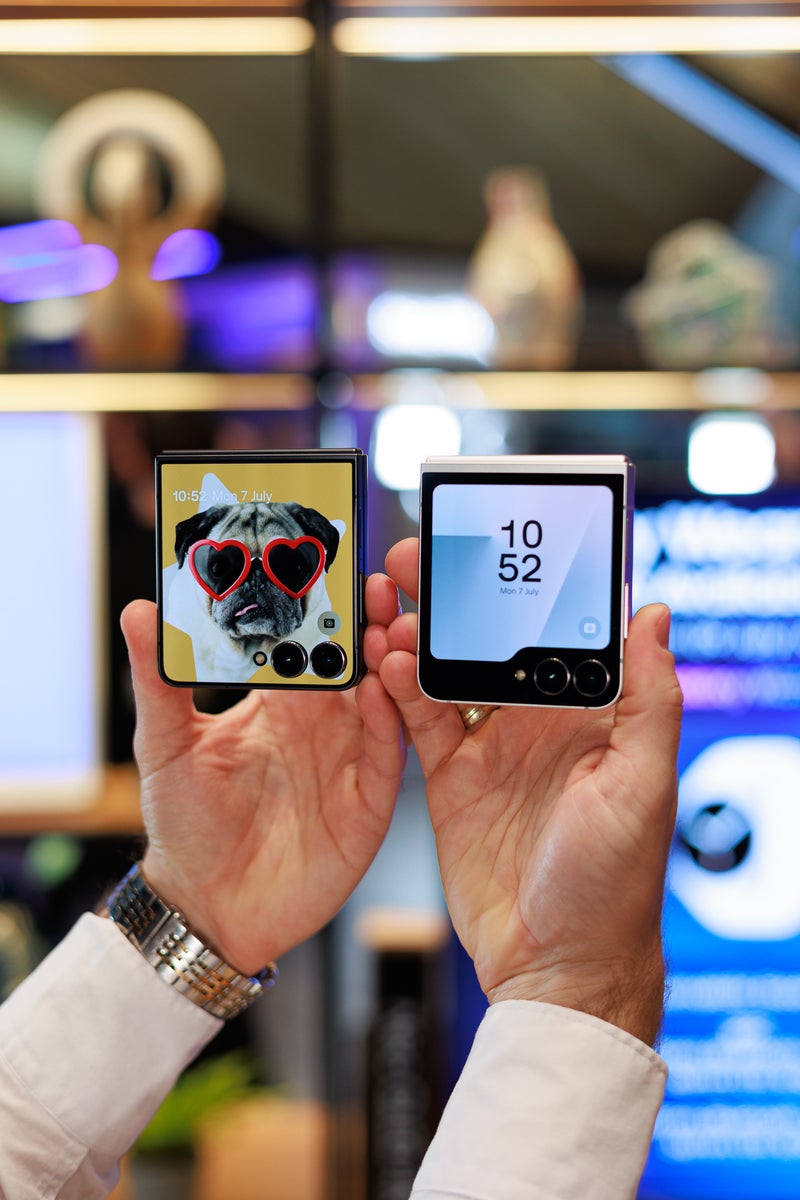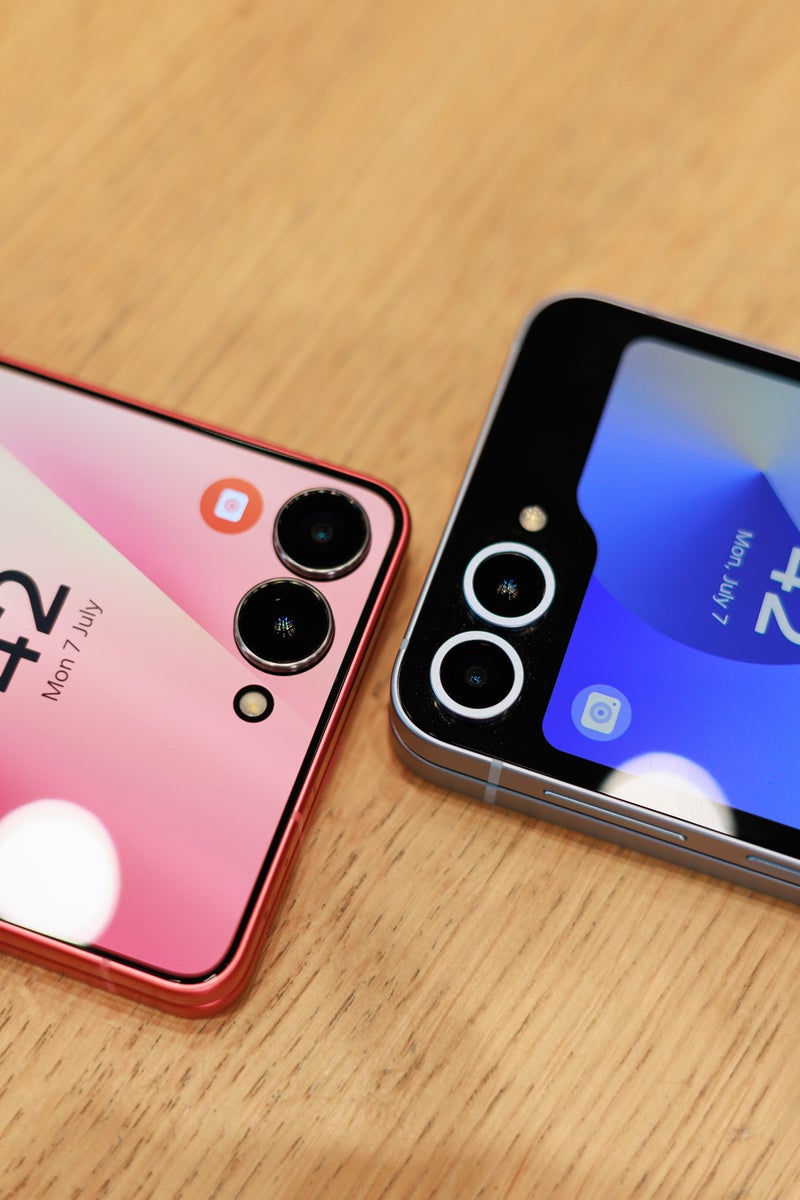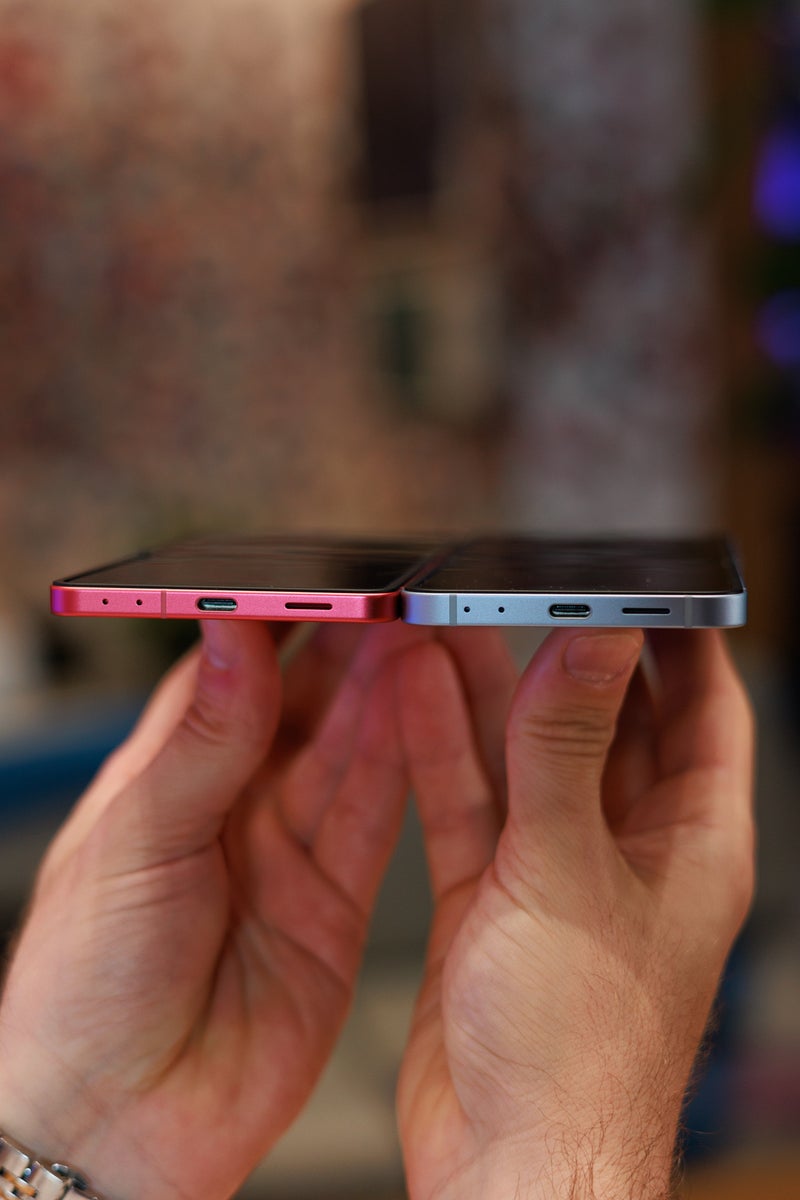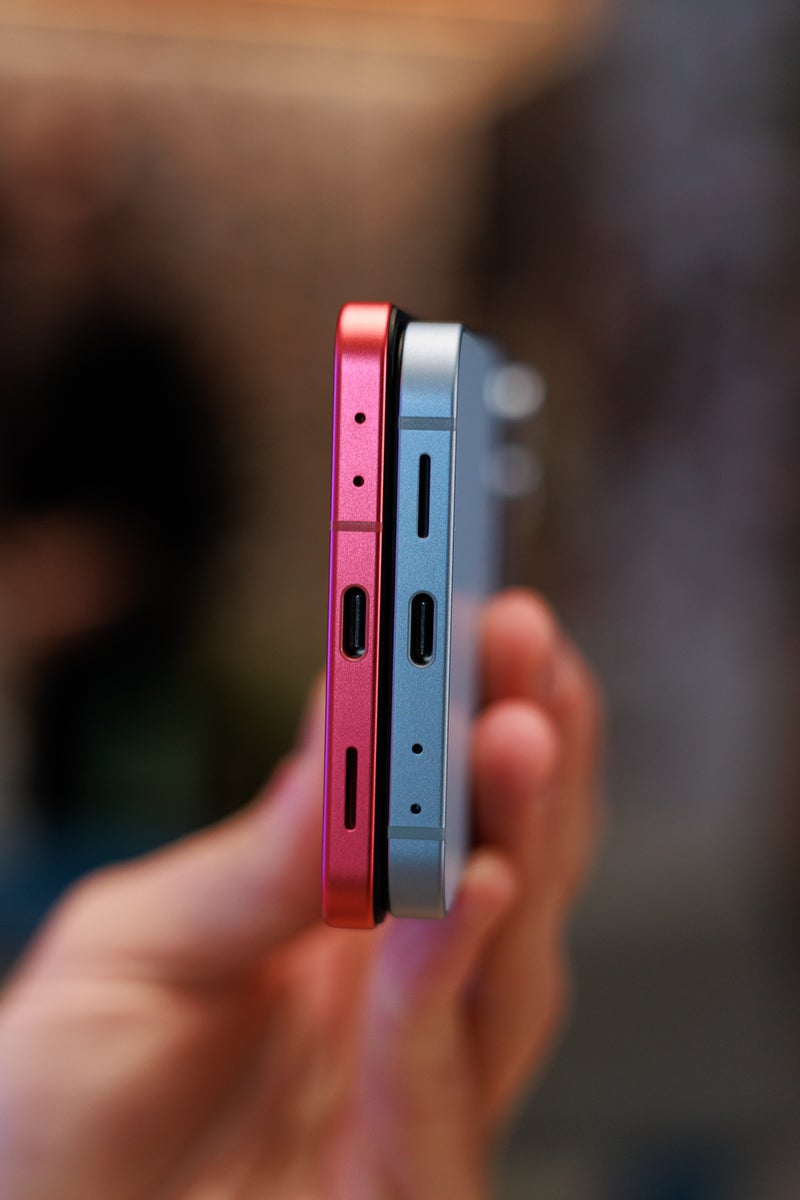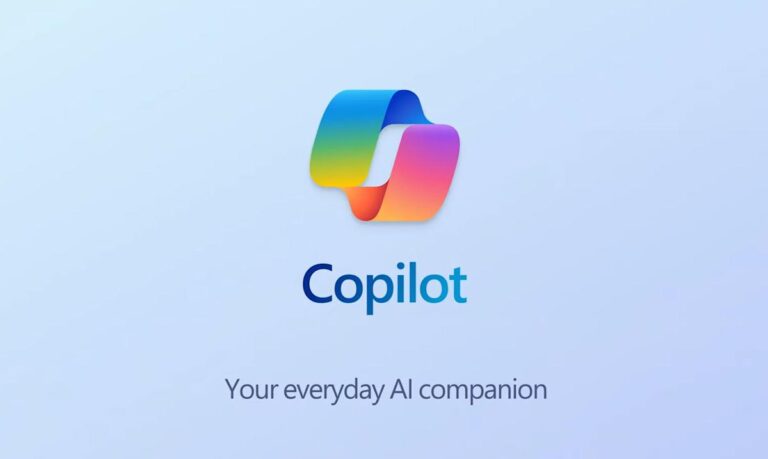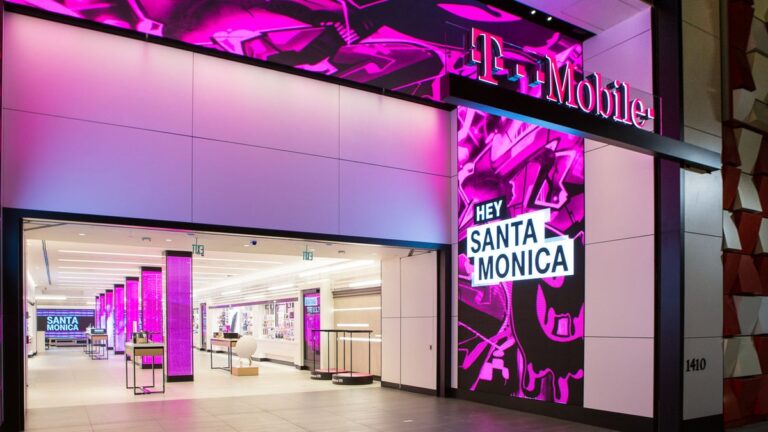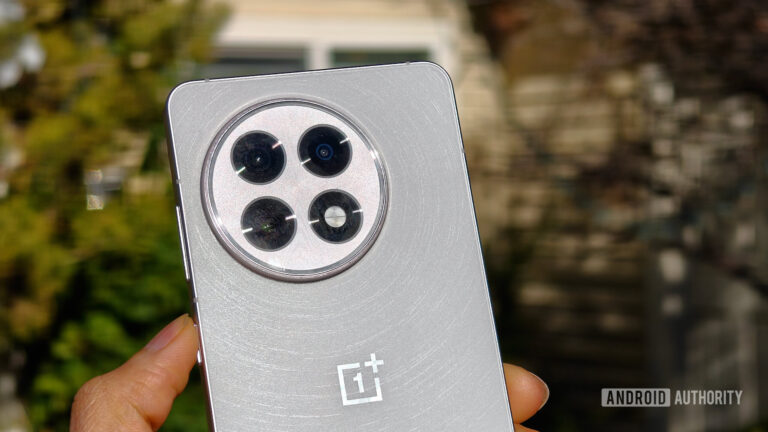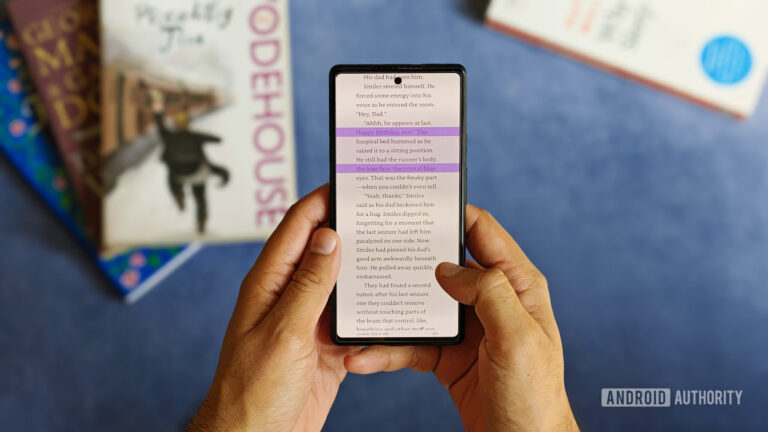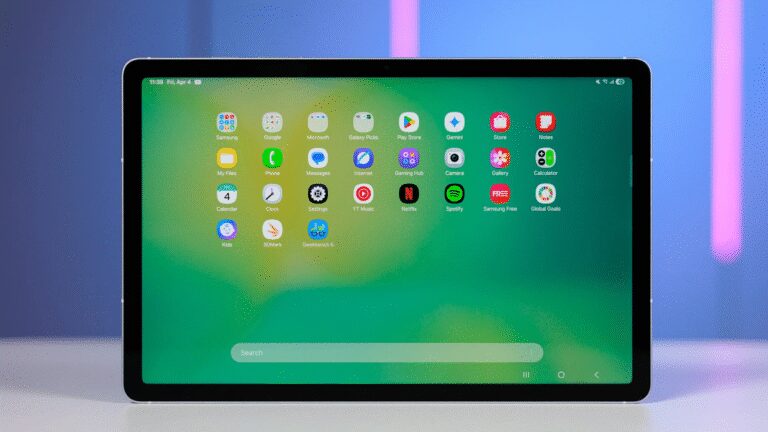Samsung Galaxy Z Flip 7 vs Galaxy Z Flip 6: Edge-to-edge cover screen!
Intro
What better way to see all the upgrades and changes that the Z Flip 7 has brought to the table than to pit it against its predecessor, the Galaxy Z Flip 6? That’s what we’re going to do today, and bear in mind that the Z Flip 7 is on the way to our lab as we type this, and we will update this comparison with all the tests and benchmarks shortly.
Galaxy Z Flip 7 vs Galaxy Z Flip 6 differences:
| Galaxy Z Flip 7 | Galaxy Z Flip 6 |
|---|---|
| Same overall design, slightly bigger footprint | A tad more compact device, same weight |
| Same camera housing redesigned cover screen | Cover screen doesn’t extend to the edges |
| The same dual camera setup | One 50MP main camera and one 12MP ultrawide |
| 1-120Hz AMOLED main display | 120Hz AMOLED as well, same brightness |
| Slightly bigger display at 6.9 inches, lower pixel density | 6.7-inch display, 1080 x 2640 pixels resolution |
| Bigger 4.1-inch cover screen with 120Hz refresh rate | 3.4-inch cover screen, 60Hz refresh rate |
| Samsung Exynos 2500 platform | One generation older Snapdragon 8 Gen 3 chipset |
| 12GB of RAM | 12GB of RAM |
| The same camera setup, including the 10MP selfie camera | 50MP main camera and 12MP ultrawide |
| Bigger 4300 mAh battery potentially better battery life | 4000 mAh battery |
| The same charging speeds | 25W wired, 15W wireless charging |
Table of Contents:
Also read:
Design and Size
More of the same
There’s no huge change when it comes to overall design, but there are some refinements. The Galaxy Z Flip 7 features bigger main and cover screens and this has impacted the overall shape and size of the device.
The new phone is wider and also a tad taller than its predecessor, although the weight is almost identical. We have the same boxy design and all the buttons are in the usual places, but this time around the Galaxy Z Flip 7 comes with an edge-to-edge cover screen. More on that in the display section.
Here’s a quick size and weight comparison.
| Galaxy Z Flip 7 | Galaxy Z Flip 6 |
|---|---|
| Thickness Unfolded: 6.5 mm Folded: 13.7 mm |
Thickness Unfolded: 6.9 mm Folded: 14.9 mm |
| Dimensions Unfolded: 75.2 x 166.7 Folded: 75.2 x 85.5 |
Dimensions Unfolded: 71.9 x 165.1 Folded: 71.9 x 85.1 |
| Weight 188 grams |
Weight 187 grams |
Now, when it comes to colors we have three main color options for the new Galaxy Z Flip 7—Jet Black, Blue Shadow, and Coral Red. There’s also a Samsung-exclusive Mint color. You can see how these new hues compare to the old ones on the Galaxy Z Flip 6 in the table below.
| Galaxy Z Flip 7 | Galaxy Z Flip 6 |
|---|---|
| – | White |
| – | Silver Shadow |
| Blue Shadow | Blue |
| Mint (Samsung exclusive) | Mint |
| Jet Black | Black |
| Coral Red | Peach |
Display Differences
A bigger inner screen and a redesigned cover screen
The inner screen has grown to a size of 6.9 inches, up from 6.7 inches on the Z Flip 6, and the cover screen is also much bigger at 4.1 inches, compared to the 3.4-inch panel on the Galaxy Z Flip 6.
There’s a difference in resolution as well—the Galaxy Z Flip 7 features a more detailed 1048 x 948-pixel display, while the Galaxy Z Flip 6 has 720 x 748-pixel resolution on its cover screen.
| Galaxy Z Flip 7 | Galaxy Z Flip 6 |
|---|---|
| Size Main screen: 6.9″ Cover screen: 4.1″ |
Size Main screen: 6.7″ Cover screen: 3.4″ |
| Brightness 2600 nits (peak) |
Brightness 2600 nits (peak) |
Performance and Software
Exynos is back!
The Galaxy Z Flip 7 unit that currently resides in our test lab has the Exynos 2500 chipset on board. This battle will be interesting for sure, as this is the latest Samsung silicon, built on a 3nm node, debuting for the first time in a phone.
We kind of expected the Galaxy Z Flip 7 to get the Snapdragon 8 Elite, but it is what it is. The new Exynos should provide enough raw power to topple the previous model. Stay tuned for benchmarks soon.
| Galaxy Z Flip 7 | Galaxy Z Flip 6 |
|---|---|
| Chip Samsung Exynos 2500 |
Chip Qualcomm Snapdragon 8 Gen 3 |
| Process 3nm |
Process 4nm |
| RAM 12GB |
RAM 12GB |
The Galaxy Z Flip 7 comes with OneUI 8 out of the box over Android 16. In contrast, the Galaxy Z Flip 6 was announced with OneUI 6 and Android 14 but was brought up to the latest OS with a subsequent update.
Speaking of updates, the seven-year software support cycle applies to both the Galaxy Z Flip 6 and the new Galaxy Z Flip 7, which means that the newer model will outlive its predecessor by exactly one year.
Stay tuned for a detailed rundown of all the features, as well as some performance benchmarks, soon.
Camera
Exactly the same?
Sadly, there aren’t any upgrades to the camera system of the Galaxy Z Flip 7, at least not in a hardware sense. The same 50MP sensor is on duty under the 23mm lens of the main camera, and the same 12MP ultrawide has been carried over from the Galaxy Z Flip 6 as well.
| Galaxy Z Flip 7 | Galaxy Z Flip 6 |
|---|---|
| Main 50 MP f/1.8 23 mm (wide) 1/1.57″ |
Main 50 MP f/1.8 23 mm (wide) 1/1.57″ |
| Ultrawide 12 MP f/2.2 13 mm (ultrawide) 123 FOV |
Ultrawide 12 MP f/2.2 13 mm (ultrawide) 123 FOV |
The Galaxy Z Flip 6 managed a camera score of 137 overall (current best is 158) in our test, so it will be interesting to see how the new phone performs with this identical hardware. That being said…
We shouldn’t rely on hardware alone, as software post-processing algorithms are doing some heavy lifting in smartphone photography, so we will need to test these to side-by-side and see if the identical hardware produces identical results.
Battery Life and Charging
A slight increase
The Galaxy Z Flip 6 has a 4000 mAh battery inside (there are two cells due to the foldable nature of the phone) which is not that huge of a capacity nowadays. The phone managed an overall battery score of 6h 45m which ranks it #69 for phones tested in the past 2 years.
Now, the Galaxy Z Flip 7 brings a slight upgrade in that department – the battery capacity of the new phone is 4300 mAh. While not huge, this upgrade will potentially help the phone to climb up the battery test ladder.
| Galaxy Z Flip 7 | Galaxy Z Flip 6 |
|---|---|
| Battery capacity 4300 mAh |
Battery capacity 4000 mAh |
|
Charging speeds 15W wireless charging USB-C |
Charging speeds 25W wired 15W wireless charging USB-C |
There are no upgrades to the charging speeds, though. The same 25W wired charging (we won’t even call it fast charging) has been carried over from the predecessor, and the same goes for the wireless charging support.
Of course, we need to do our battery and charging tests to evaluate the Galaxy Z Flip 7 scientifically, so stay tuned for some hard numbers when the phone goes official.
Specs Comparison
| Galaxy Z Flip 7 | Galaxy Z Flip 6 |
|---|---|
| Size, weight 166.7 x 75.2 x 6.5 mm 188 g |
Size, weight 165.1 x 71.9 x 6.9 mm 187 g |
| Screen Main: 6.9″ AMOLED 1-120Hz 2600 nits peak Cover: 4.1″ 120Hz |
Screen Main: 6.7″ AMOLED 1-120Hz 2600 nits peak Cover: 3.4″ 60Hz |
| Processor Qualcomm Snapdragon 8 Elite Samsung Exynos 2500 3nm |
Processor Qualcomm Snapdragon 8 Gen 3 4nm |
| Versions: 12/256GB 12/512GB LPDDR5 |
Versions: 12/128GB 12/256GB 12/512GB LPDDR5 |
| Cameras: 50MP main 12MP ultrawide 10MP front |
Cameras: 50MP main 12MP ultrawide 10MP front |
| Battery: 4300 mAh |
Battery: 4000 mAh |
| Charging: USB-C 25W wired 15W wireless charging |
Charging: USB-C 25W wired 15W wireless charging |
Summary
This doesn’t look like a huge improvement compared to the Galaxy Z Flip 6 and most likely won’t convince too many people to upgrade if they already rock the previous generation.
For new adopters of the flip form factor, the Galaxy Z Flip 7 offers a good enough package, but then again, there are great alternatives from Motorola and also from the Far East if you’re willing to put some additional effort into getting the latter models.
The usual caveat applies here as well—we will update the comparison with tests, benchmarks, camera samples, and a final verdict once we get the Galaxy Z Flip 7.

